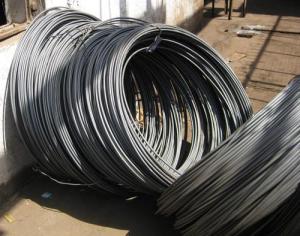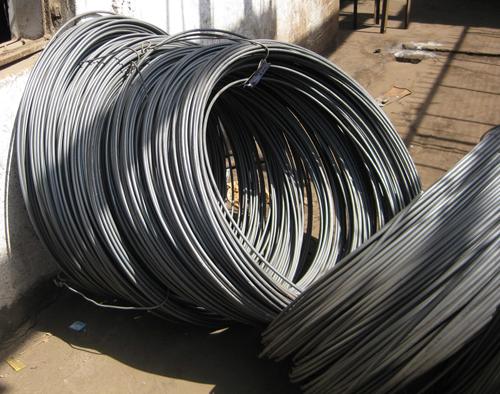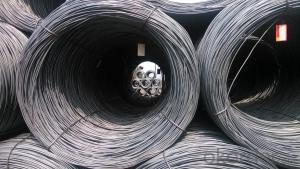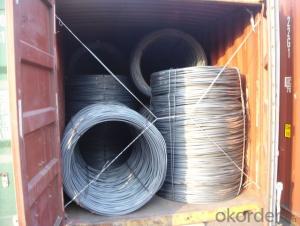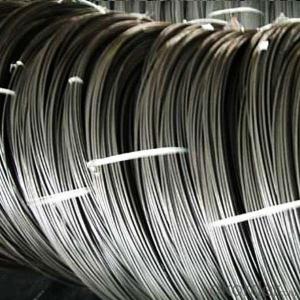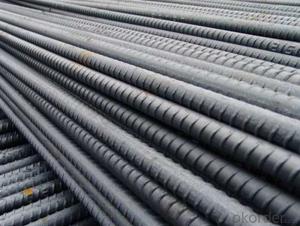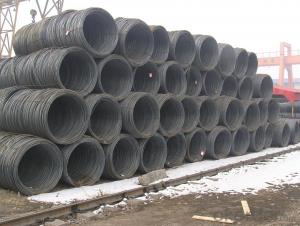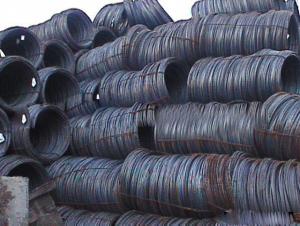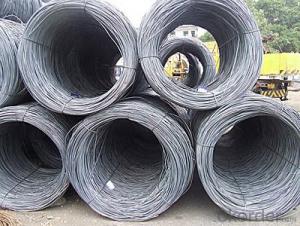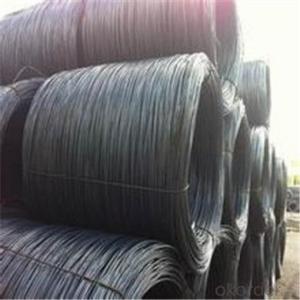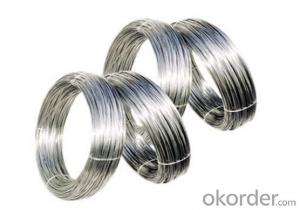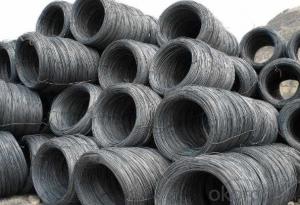Steel Wire Rod 5.5mm
- Loading Port:
- China Main Port
- Payment Terms:
- TT OR LC
- Min Order Qty:
- -
- Supply Capability:
- -
OKorder Service Pledge
OKorder Financial Service
You Might Also Like
Specifications of Steel Wire Rod in Coil:
Steel Grade: Q195/235, SAE1006-1018B Standard: ASTM, GB
Diameter: 5.5mm
Type: Drawn Wire Alloy or Not: Alloy Brand Name: HSKY
Technique: Hot Rolled Place of Origin: China Mainland
Chemical Composition:(Please kindly find our chemistry of our material based on SAE1006B and SAE1008B as below for your information)
Grade | Chemical Composition (%) | |||||
C | Mn | S | P | Si | B | |
SAE1006B | 0.03~O.07 | 0.32max | 0.045max | 0.040max | 0.30max | 0.0008min |
Mechanical properties | ||||||
Yield strength(N/mm2) | Tensile strength(N/mm2) | Elongation (%) | ||||
250-280 | 350-380 | ≥32 | ||||
Grade | Chemical Composition (%) | |||||
C | Mn | S | P | Si | B | |
SAE1008B | 0.10max | 0.3~0.50 | 0.050max | 0.040 max | 0.15max | 0.0008 min |
Mechanical properties | ||||||
Yield strength(N/mm2) | Tensile strength(N/mm2) | Elongation (%) | ||||
≥195 | 315-430 | ≥30 | ||||
- Q: How is steel wire rod used in the manufacturing of wire for power distribution systems?
- Steel wire rod is a crucial component in the manufacturing of wire for power distribution systems. It serves as the raw material from which the actual wire is produced. Firstly, steel wire rod is commonly made from carbon steel and has high tensile strength, making it ideal for carrying electricity over long distances. The wire rod undergoes a series of processes such as hot rolling, drawing, and annealing to turn it into a thin and flexible wire. During the hot rolling process, the steel wire rod is heated to a specific temperature and then passed through a series of rollers to reduce its diameter. This process helps in refining the steel's grain structure, enhancing its strength and flexibility. Next, the wire rod is drawn through a series of dies to further reduce its diameter and increase its length. This drawing process also improves the wire's mechanical properties, such as its tensile strength and conductivity. The wire rod is pulled through the dies by a drawing machine, resulting in a continuous length of wire. After the wire is drawn, it undergoes an annealing process, which involves heating it to a specific temperature and then slowly cooling it. Annealing helps relieve any residual stresses in the wire, making it more flexible and easier to handle during the manufacturing process. Once the wire rod has been transformed into wire, it can be further processed and insulated to meet the specific requirements of power distribution systems. Insulation materials such as PVC or XLPE (cross-linked polyethylene) are applied to the wire to provide electrical insulation and protect against moisture, temperature fluctuations, and physical damage. Finally, the insulated wire is used to manufacture various components of power distribution systems, including cables, conductors, and overhead lines. These wires are utilized to transmit electricity from power plants to substations, then further distributed to homes, businesses, and other facilities. In summary, steel wire rod is an essential material in the manufacturing of wire for power distribution systems. Through processes such as hot rolling, drawing, and annealing, the wire rod is transformed into thin and flexible wire, which is then insulated to meet the specific requirements of power distribution applications. This wire plays a crucial role in carrying electricity safely and efficiently over long distances.
- Q: What are the common applications of alloy steel wire rod?
- Common applications of alloy steel wire rod include the manufacturing of automotive parts, construction materials, machinery components, and electrical equipment. It is also used in the production of springs, cables, wire mesh, and various types of fasteners.
- Q: How are steel wire rods used in the production of wire ropes for cranes?
- Wire ropes for cranes heavily rely on steel wire rods, which act as a crucial ingredient. These rods function as the primary material in the wire rope manufacturing process. Initially, careful selection of steel wire rods is based on their mechanical properties, such as strength and durability. Subsequently, a sequence of processes, including cleaning, heating, and drawing, is applied to transform the rods into wire strands. After the formation of wire strands, they are tightly wound together to create the wire rope. This procedure entails intertwining numerous strands around a central core, typically composed of fiber or steel. The arrangement of the wire strands in a helical pattern enhances both the strength and flexibility of the wire rope. The steel wire rods specifically chosen for the production of wire ropes for cranes possess high tensile strength. This ensures that the wire ropes can endure heavy loads and extreme working conditions. The strength of the steel wire rods directly impacts the overall strength and safety of the wire ropes. Moreover, during the manufacturing process, the steel wire rods undergo various quality control measures to ensure their dependability and consistency. These measures entail testing for tensile strength, breaking load, and other performance parameters. Once the wire ropes are manufactured using the steel wire rods, they find utility in a wide range of crane applications. Wire ropes are indispensable for lifting and transporting heavy loads, providing stability and control throughout crane operations. They play a critical role in the secure and efficient lifting, lowering, and suspension of loads in diverse construction, industrial, and maritime settings. In conclusion, steel wire rods are an essential part of wire rope production for cranes, as they deliver the necessary strength, durability, and reliability required in demanding work environments.
- Q: What are the main factors influencing the choice of steel wire rod transportation method?
- The main factors influencing the choice of steel wire rod transportation method include distance, cost, time, and safety. Distance is a significant factor as it determines the mode of transportation that is most suitable. For shorter distances, trucking or rail transport may be the preferable options, while for longer distances, sea or air transport may be more efficient. Cost is another crucial factor as it affects the overall transportation expenses. The cost of each transportation method, including fuel, labor, and maintenance, needs to be considered. Additionally, the cost of any required packaging or handling during transportation should also be taken into account. Time is an important factor, especially for time-sensitive deliveries. Different transportation methods have varying transit times, and the urgency of the delivery may influence the choice of transportation. For example, air transport is generally the fastest option, while sea transport may take longer but could be more cost-effective. Safety is paramount when transporting steel wire rods. The transportation method should ensure the security and integrity of the cargo. Factors such as the susceptibility of steel wire rods to damage, the risk of theft, and the stability of the transportation mode should be considered. For instance, if the steel wire rods are fragile or prone to damage, a transportation method with extra protection, such as containerized shipping, may be preferred. Other factors might also influence the choice of transportation method, such as environmental considerations, infrastructure availability, and the reliability of the chosen transportation service provider. Ultimately, the selection of the steel wire rod transportation method should be based on a careful evaluation of these various factors to ensure the most efficient, cost-effective, and safe transport of the cargo.
- Q: How does the steel wire rod market vary regionally?
- The steel wire rod market varies regionally based on factors such as demand, production capacity, infrastructure, and economic development. Different regions may have varying levels of steel consumption and manufacturing capabilities, leading to differences in market size and competitiveness. Additionally, local regulations, trade policies, and transportation costs can also impact regional variations in the steel wire rod market.
- Q: How does the dimensional accuracy of steel wire rod vary with different heat treatment processes?
- Different heat treatment processes can result in varying dimensional accuracy for steel wire rods. Heat treatment involves subjecting the wire rod to controlled heating and cooling procedures that alter its physical and mechanical properties. One commonly used heat treatment process for steel wire rods is annealing. Annealing involves heating the wire rod to a specific temperature and then gradually cooling it. This process helps alleviate internal stresses, enhance ductility, and refine the grain structure of the steel. In terms of dimensional accuracy, annealing can minimize internal stresses that may lead to distortion or warping in the wire rod, resulting in improved dimensional stability. Another heat treatment process is quenching and tempering. Quenching involves rapidly cooling the wire rod after heating it to a high temperature, typically using a liquid like oil or water. This rapid cooling hardens the steel, making it stronger but also more brittle. To enhance toughness and reduce brittleness, the wire rod is then tempered by reheating it to a lower temperature and slowly cooling it. The quenching process can affect dimensional accuracy due to the rapid cooling, which may cause distortion or warping. However, tempering helps decrease brittleness and minimize distortion, leading to improved dimensional accuracy. Additionally, other heat treatment processes such as normalizing and stress relieving can also impact the dimensional accuracy of steel wire rods. Normalizing involves heating the wire rod to a specific temperature and allowing it to cool in still air. This process refines the grain structure and improves the mechanical properties of the steel. On the other hand, stress relieving involves heating the wire rod to a temperature below the critical range and gradually cooling it, which reduces internal stresses. Both normalizing and stress relieving can contribute to improved dimensional accuracy by minimizing distortions or warping. To summarize, the dimensional accuracy of steel wire rods can vary depending on the heat treatment process used. Annealing, quenching and tempering, normalizing, and stress relieving are some commonly employed heat treatment processes that can affect dimensional accuracy. Careful consideration should be given to the choice of heat treatment process in order to achieve the desired dimensional accuracy while also meeting the required mechanical properties of the steel wire rod.
- Q: How is steel wire rod tested for uniformity of diameter?
- Steel wire rod is tested for uniformity of diameter through a process called diameter measurement. This involves using high-precision instruments, such as micrometers or laser gauges, to measure the diameter at various points along the rod. These measurements are then compared to establish the degree of uniformity. Additionally, statistical analysis may be performed to determine the average diameter and the range of variation within the wire rod.
- Q: What are the common alloying elements used in steel wire rod?
- The common alloying elements used in steel wire rod include carbon, manganese, silicon, and sometimes small amounts of other elements such as chromium, nickel, and vanadium.
- Q: What are the major players in the global steel wire rod market?
- ArcelorMittal, Nippon Steel Corporation, Tata Steel Ltd., POSCO, JFE Steel Corporation, Nucor Corporation, Steel Authority of India Limited (SAIL), EVRAZ plc, Gerdau S.A., and Sohar Steel LLC are among the key players in the global steel wire rod market. These companies are renowned manufacturers and suppliers of steel wire rod, which finds extensive application in industries like construction, automotive, and manufacturing. They possess a significant market share and maintain a strong presence in vital markets worldwide. To stay competitive, these industry leaders consistently invest in research and development to develop innovative products and enhance their production processes. They also prioritize strategic alliances, acquisitions, and expansion initiatives to broaden their market reach and fortify their position in the global steel wire rod market.
- Q: How is steel wire rod used in the manufacturing of wire ropes for elevators?
- Steel wire rod is used as the raw material in the manufacturing process of wire ropes for elevators. It is first drawn into thin wires and then twisted together to form strands. These strands are then further twisted and combined to create a strong and durable wire rope, which is used to support the weight and movement of elevator systems. The high tensile strength and flexibility of steel wire rod make it an ideal choice for ensuring the safety and reliability of elevator operations.
Send your message to us
Steel Wire Rod 5.5mm
- Loading Port:
- China Main Port
- Payment Terms:
- TT OR LC
- Min Order Qty:
- -
- Supply Capability:
- -
OKorder Service Pledge
OKorder Financial Service
Similar products
Hot products
Hot Searches
Related keywords
